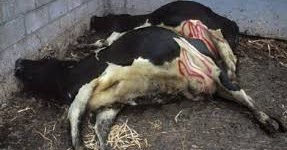matthew
Member
- Location
- Cornwall, SW England
We can't just use the science we like.
It is proven that cattle to cattle transmission is far easier than badger to cattle.
TB is very easily transmitted which is why it is a problem in poor slums for people.
But it takes a badger to place it in the herd most of the time. Again farmers are still not immune to blame here because they will turn up to a farm sale 10 days after that farms first clear status in 6 years and spread the cows all over the country.
But badgers are a pivotal pin in a tool box of many choices available to us to control tb.
I have only recently learnt though it's obvious when pointed out that the use of rock salt in an infected herd is an extremely bad idea.
cattle to cattle transmission in the field is difficult. The amount of cfu (colony forming units) found in cattle lesions, even big lesions, is minute. While even ‘milliary’ tiny lesions in badgers are hooching. For example, up to 300,000 cfu have been counted in just 1ml of badger urine, and they void up to 30 ml with each incontinent squirt.
So we asked how many cfu s to infect a cow?
Just 1 a single one, to infect a calf, and around 70 cfu s for a cow.
See our PQ answers:

How much is enough?
When people (who should know better) talk about vaccinating badgers, because this over time 'reduces transmission opportunities', what exac...
Not so sure about the ease of cattle to cattle , for us 1600 head at highest point of lock down over 30 year down , all cattle direct to slaughter 4 animals found at slaughter with btb lesions 1 of them positive, 30% of red deer of Exmoor have btb, @matthew will have the NI tb information when cattle were shut In sheds and transmission was very low, most of the new research seem to be mathematical modelling not hard data, we were Involved many years ago with research with Warwick University, seemed In the end they were just using mathematical modelling to stop culling, not btb
The Irish did indeed keep reactor animals in small groups, sharing air, water and feed and failed to create spread. So they repeated the exercise for twelve months (previously six) and most still did not transmit.
Then there was the £28m Pathman project which was equally unsuccessful in creating spread from reactor animaks.
We have been clear for 12 months .Before that always in and out of restrictions .Lots more deer about especially fallow .They don't seem to spread it to cattle the same if at all .
Deer have similar lesion characteristics to cattle. But sharing feed is a possible transmission route. As in the white tailed deer in .Michigan, who shared molassed corn buckets with cattle. A practise now made illegal.








